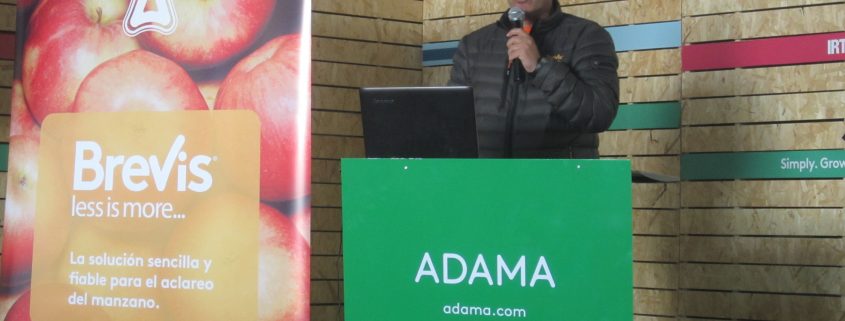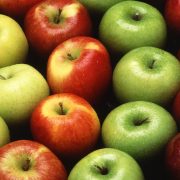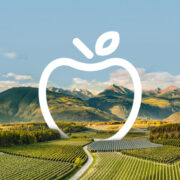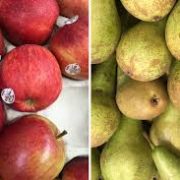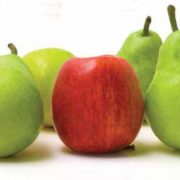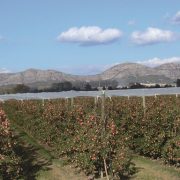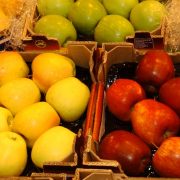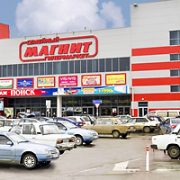Adama, main protagonist of the XX fruit day in Mollerussa
For two days the Experimental Farm of Mollerussa Institute of Agrifood Research and Technology of Catalonia (IRTA) has become the national center of fruit growing with the celebration of the twentieth edition of its fruit day, an event that has come over 1,800 growers who came from different parts of Spain and this year has had the sponsorship of Adama Agriculture Spain, which has debuted Brevis®, an extraordinary innovation in apple thinning.
Adama’s participation in this edition of the conference fruit has been a major boost compared to previous editions, as highlighted Simon Alegre, director of IRTA in Lleida centers: “This day fruit born from the need to have a space which transfer information from the IRTA tests performed throughout the year and have a platform where technical solutions, presentation of innovations by firms … and together discuss the solutions which can be the future of the fruit sector. With the support of Adama have a number of resources that have helped us to make warmer the facilities and adapt the rooms to make them more comfortable, resulting in the quality of the information you are transferring. “Something that has endorsed the Marketing Director Adama Agriculture Spain, Juan Antonio Escribano: “For us the day of Mollerussa fruit is a double opportunity: on the one hand present our rebranding worldwide and moreover announce the launch of Brevis ®. Given the importance of this product for the fruit sector was an obligation patrocinásemos this year this important event.”
Discovering Brevis®
One of the main attractions of this year’s fruit Mollerussa day was the presentation of Brevis®, a simple and effective solution for chemical thinning in apple growing, especially in varieties that were previously difficult to clarify the available solutions, such as Gala and Fuji varieties. During his presentation, Vicente Muñoz, Product Manager of Adama Agriculture Spain, stressed the innovative mode of action of this product, which works by temporarily inhibiting the photosynthetic capacity of the plant, resulting in a deficit of carbohydrates and, therefore, fall of the side fruit. All with the aim of reducing the need for hand thinning or other actions aimed at regulating the trees, which directly and positively impact the quality apple production, with a size and quality suitable depending on the variety, to maximize revenue and reduce expenses. “We optimize the benefit because we have quality production with fewer but larger bore fruit. With Brevis® got also significantly reduce the costs of labor when performing manual thinning and it is easier”, remarked Muñoz.
This information has been proven positively by the IRTA through tests conducted by different researchers from IRTA, among them is Luis Asin. According to these tests, depending on climatic and agronomic conditions, the application rate of the product should be between 1.1 and 1.65 kg / ha, with a maximum of two applications spaced 4 to 6 days and tree fruits with diameters between 6 and 14 millimeters. “It is a breakthrough because we are talking about a product whose mode of operation differs from other products on the market, based on a hormonal mode of action. Time will tell how we are able to handle the product properly to ensure that it becomes a benchmark . In particular, we have put hopes in the Gala and Fuji varieties. Both have problems with thinning chemical products hitherto on the market, making a manual thinning have to always occur. We hope that the product evolves and show increasingly better results in these varieties,” said Asin.
Study on mesh
Other studies that have been released during the day Mollerussa fruit has been developed by the IRTA researcher Luis Gonzalez entitled “Effect of hail nets on the effectiveness of Brevis®”. According to these studies, released during field demonstrations and developed at the Experimental Station of the IRTA Mas Badia, white or green hail mesh, with an inhibition of radiation 9 and 16% respectively, have no effect on the effectiveness of the product. However with shade nets, which reduce the radiation by almost 60%, it is greatly reduced the number of fruits and fruit set, showing that radiation is a major factor in the product.
Source: Adama




